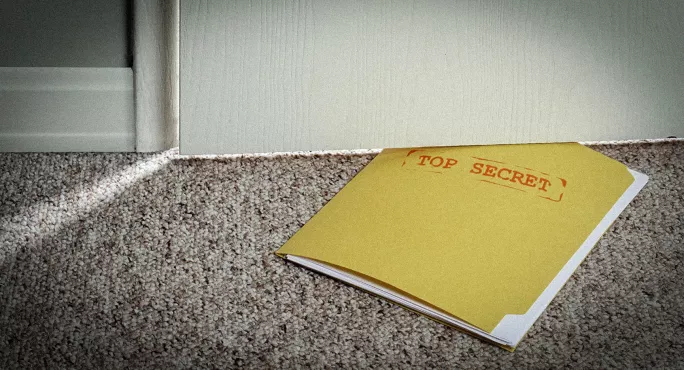Government to enforce minimum learning hours

The Scottish government has told councils that it intends to enshrine in law the number of learning hours that primary and secondary pupils must receive each week.
It has also said it plans to introduce “financial sanctions for local government” if the pupil-teacher ratios recorded in 2022 are not maintained.
The measures - spelled out in papers seen by Tes Scotland and prepared for a meeting of council leaders, under the council umbrella organisation Cosla, tomorrow - come in response to council plans to cut teacher numbers and even the length of the school day in order to balance budgets next year.
However, local authorities - which say they are facing a £1 billion budget shortfall - claim the move could leave some councils unable to set their budgets, or forced to “decimate other services” or “drastically increase council tax to fund these teaching posts”.
They also say the move could lead to “further cuts to pupil support staff” at a time when “demand for additional support for learning continues to increase at pace”, or reductions in subject choice in secondary.
- Teacher numbers: Teacher job cuts will be blocked, says Sturgeon
- School funding: “Unthinkable cuts” to education proposed by Scottish councils
- Teacher strikes: Secondary teachers’ union joins two days of Scottish strike action
The papers state that earlier this week Scottish government officials told Cosla that - because of the savings proposals being considered by some councils - ministers were considering “laying regulations under the Education (Scotland) Act 2016 to set minimum learning hours each week” and “‘locking’ the current pupil-teacher ratio and introducing financial sanctions for local government where this is not maintained”.
The papers say that the government’s position was then confirmed by education secretary Shirley-Anne Somerville at a meeting with Cosla yesterday.
Council proposals to cut teacher jobs
The papers state that she “opened the meeting by informing Cosla that at the Cabinet meeting on Tuesday, ministers had agreed that regulations to set minimum hours and the ‘lock’ on the [pupil-teacher ratio] would be introduced.”
Today at First Minister’s Questions, Nicola Sturgeon said that the government intended to “act to protect teacher numbers” after reports that councils were considering drastic cuts in order to balance their budgets, but it was not clear how it planned to do this. Ms Sturgeon said that Ms Somerville would “set out more details to Parliament in the coming days.”
Previously, council funding has been tied to maintaining teacher numbers. The Cosla papers state: “Scottish government officials had indicated that their intention would be to reinstate the mechanism that was in place before 2018 where councils submitted quarterly monitoring returns which were reviewed before the release subsequent funding.”
Last year pupil-teacher ratios were maintained in Scotland at 13.2 pupils per teacher but the pupil-teacher ratio increased in 19 councils and there was an overall drop in teacher numbers of 92 - the first drop since 2016.
Recently it has emerged that councils are contemplating previously unthinkable cuts. Last week it was reported that Glasgow City Council was considering cutting over 800 teachers to save £51 million and help plug a funding gap of £68 million. One Glasgow proposal is to end the school day early on a Friday, affecting 324 roles, for a saving of £18.5 million.
Local authorities in Scotland are required to provide a minimum of 190 days of school education a year. However, there is no statutory minimum number of learning hours that must be provided each week set by the Scottish government.
The Cosla papers say that at present “the vast majority of councils” deliver 25 hours a week in primary and 27 hours a week in secondary but “there is divergent practice in some areas” and that increasing the learning hours would “create new challenges” and “have further financial implications for local government”.
Ms Somerville said: “We have very clear commitments to improve Scottish education. Ministers are firm in their views that Scottish education would not be improved by having fewer teachers or less time in school.”
Research conducted in 2015 by the Reform Scotland think tank found “huge variance” in the number of hours of teaching time offered in Scottish state schools.
It showed that Aberdeenshire Council and West Dunbartonshire Council offered the most teaching time in Scotland, with 1,000 hours per year in primary school and 1,100 hours per year in secondary school.
By contrast, it found that Moray offered the least primary school time, at 851 hours, while Dundee and Midlothian offered 855 hours of secondary school teaching.
The variance, the research concluded, was 149 hours per year at primary level, and 245 at secondary level.
In the past the Scottish government has made moves to address the discrepancy by setting a national minimum standard, but because of council opposition it has never come to pass.
Register with Tes and you can read two free articles every month plus you'll have access to our range of award-winning newsletters.
Keep reading with our special offer!
You’ve reached your limit of free articles this month.
- Unlimited access to all Tes magazine content
- Save your favourite articles and gift them to your colleagues
- Exclusive subscriber-only stories
- Over 200,000 archived articles
- Unlimited access to all Tes magazine content
- Save your favourite articles and gift them to your colleagues
- Exclusive subscriber-only stories
- Over 200,000 archived articles



